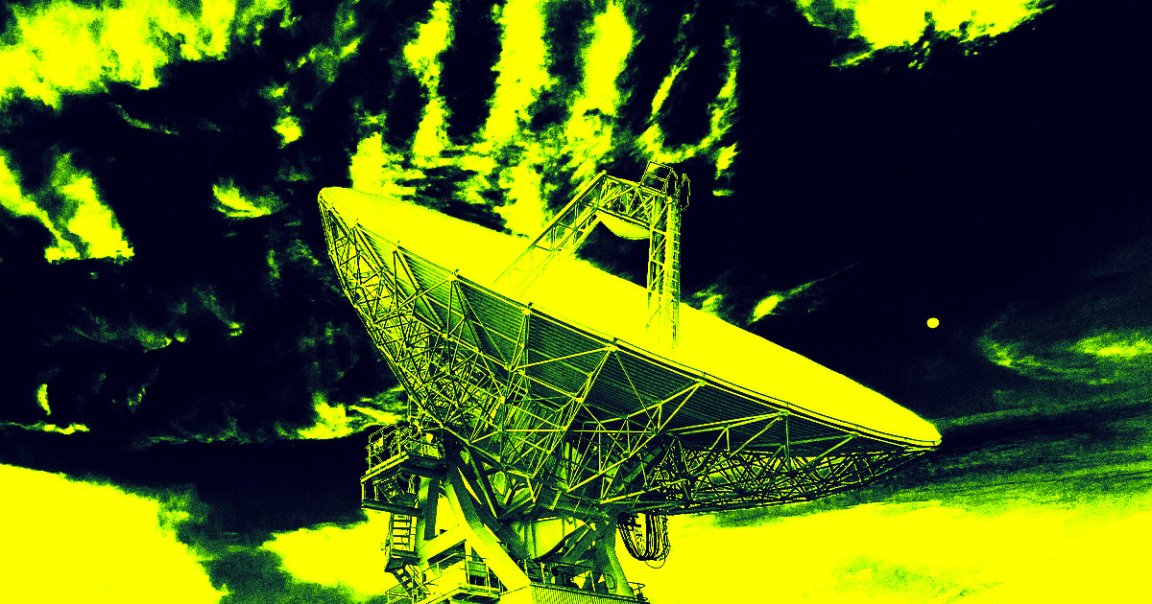
Radio Star
A repeating radio signal from deep space has scientists puzzled, because they can’t fully explain what’s emitting it.
Their working hypothesis, as detailed in a study published in the journal Nature Astronomy, is that the source is likely a kind of neutron star called a pulsar that fires off radio signals as it rotates on its axis.
But if true, that only raises more questions. With an interval of 54 minutes, the object, called ASKAP J1935+2148, would be the slowest spinning neutron star ever documented by an astounding margin. It’s so slow, in fact, that it should be impossible — adding to a small but growing list of these apparent stellar remnants that defy explanation.
“It is highly unusual to discover a neutron star candidate emitting radio pulsations in this way,” said study lead author Manisha Caleb from the University of Sydney Institute for Astronomy in a statement about the work. “The fact that the signal is repeating at such a leisurely pace is extraordinary.”
Speed Demon
Neutron stars are formed in the aftermath of a supernova, an epic explosion that occurs when a massive star runs out of fuel and collapses under its own gravity.
Whatever mass doesn’t get blasted into space gets compressed into a fraction of the star’s original size, making them the densest objects in the universe that aren’t black holes.
Neutron stars also have ludicrously powerful magnetic fields, which send out streams of particles into space along their poles. In the case of pulsars, their rotation causes these particle streams to rotate, too, and to astronomers this looks like a repeating signal.
ASKAP J1935+2148 would seem to fit that bill — except it should be impossible for a neutron star to spin as slow as it does and still send out pulses. For an idea of just how abnormal this is, pulsars typically take no more than a few seconds — at most — to complete a rotation. (Meanwhile, the fastest known neutron star spins at a neck-breaking 716 times per second.)
Stellar Spin-Off
The mysterious object also has three different emission states, “each with properties entirely dissimilar from the others,” Caleb said. There are the strong radio signals, which last between 10 to 50 seconds, then a weaker state where it emits a pulse 26 times fainter that lasts just a third of a second, and then finally a quiescent state.
Over a period of eight months, the researchers noticed that the active emissions states were evolving, suggesting that there may be physical changes in the area that’s producing the emissions.
If it’s not a neutron star, the researchers think it could be a white dwarf, the most common type of stellar remnant, that is highly magnetic. This possibility, too, is not without its quandaries: if the white dwarf really is that magnetized, astronomers should’ve already detected others like it nearby because of how powerful they are. But so far, none have been.
Further investigation of the object, Caleb said, “might even prompt us to reconsider our decades-old understanding of neutron stars or white dwarfs; how they emit radio waves and what their populations are like in our Milky Way galaxy.”
More on space: Astronomers Struggle to Explain Why Ancient Black Holes Are Nowhere to Be Found